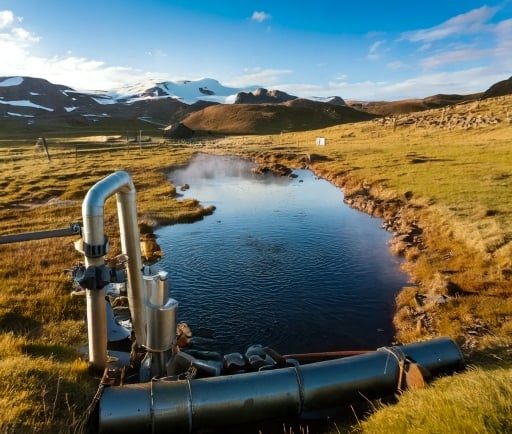Harnessing Heat: The Potential of Thermal Water Lakes


Introduction to Thermal Water Lakes
Thermal water lakes offer a unique and effective solution for sustainable heating. These natural formations can harness geothermal energy, providing a consistent and eco-friendly method to warm residential and commercial spaces. The utilization of these lakes not only addresses energy demands but also promotes environmental stewardship.
The Science Behind Thermal Heating
At the heart of thermal water lakes is the earth's geothermal energy, a renewable and virtually inexhaustible resource. Water heated by the earth's core rises to the surface, creating lakes that maintain a higher temperature than surrounding bodies of water. This heat can be extracted and used to heat buildings or generate electricity, making thermal water lakes an essential player in the transition to renewable energy solutions. The technology involved is relatively straightforward; closed-loop systems transfer heat from the water into heating systems with minimal environmental impact.
Economic and Environmental Benefits
Investing in heating through thermal water lakes provides both economic and environmental benefits. Economically, utilizing geothermal energy reduces reliance on fossil fuels, leading to lower energy costs in the long run. Furthermore, unlike traditional heating methods, heating through thermal water lakes minimizes carbon emissions, playing a pivotal role in combating climate change.
Moreover, thermal water lakes can encourage local economies through eco-tourism and recreational opportunities. Areas surrounding these lakes often witness increased sightseeing and recreational activities, which can lead to job creation and enhanced community engagement.
Challenges and Considerations
Despite their benefits, there are challenges associated with harnessing thermal water lakes for heating. Location is a significant factor; not all regions are endowed with thermal lakes. Additionally, local regulations concerning the management of these natural resources need to be carefully reviewed to ensure sustainable practices. Engaging with communities nearby is crucial to gain support and address any concerns they might have regarding extraction processes.
Conclusion
Heating through thermal water lakes presents a promising frontier in sustainable energy. As technological advancements continue, it is essential for policymakers and environmentalists to collaborate, promoting the sustainable utilization of geothermal resources. By harnessing the natural warmth stored in these lakes, we can pave the way toward a cleaner, more sustainable future.
